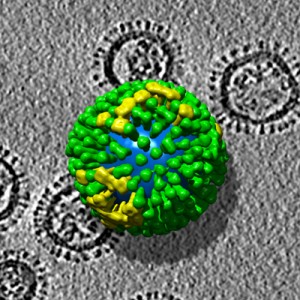WEDNESDAY, 29 FEBRUARY 2012
Currently, the success of influenza vaccination programs relies on accurately predicting which particular strain of virus will be most prevalent during any given winter season. Vaccination with “dead” virus enables recipients to produce protective antibodies against the virus. However, predictions can be wrong and, moreover, viruses are constantly evolving and changing. Virulent pandemic strains, such as the 2009 H1N1 swine flu, can emerge unexpectedly and evade detection by existing antibodies.New research by Wilkinson and colleagues, published in Nature Medicine, suggests that a person’s pre-existing T-cell mediated immune response might be just as important as their antibody response when it comes to fighting off flu viruses. T-cells are immune cells that kill viruses and virus-infected cells. Prior to infecting volunteers with seasonal variants of flu strains H3N2 and H1N1, against which the volunteers had no pre-existing antibodies, the researchers measured their participants’ T-cell responses. Encouragingly, they saw that T-cell immune responses were triggered by flu proteins that tend to differ relatively little between flu strains, in this case Matrix and Nucleoprotein rather than fast-evolving Hemagglutinin and Neuraminidase.
People with a stronger T-cell response experienced milder symptoms and shorter illness duration. A subtype of T-cells, CD4+ cells, were found to take on a new cytotoxic role, killing infected cells at the source of infection, preventing further spread of the virus. Most importantly, however, T-cell activity was triggered equally in response to short stretches of Matrix protein from either the seasonal or pandemic H1N1 strain, despite the fact that the two strains differ slightly in amino acid sequence.
The researchers hope that these peptides can therefore be used to make vaccines that will trigger an effective T-cell immune response, regardless of which particular strain of flu has been contracted.
Written by Nicola Stead
doi: 10.1038/nm.2612

